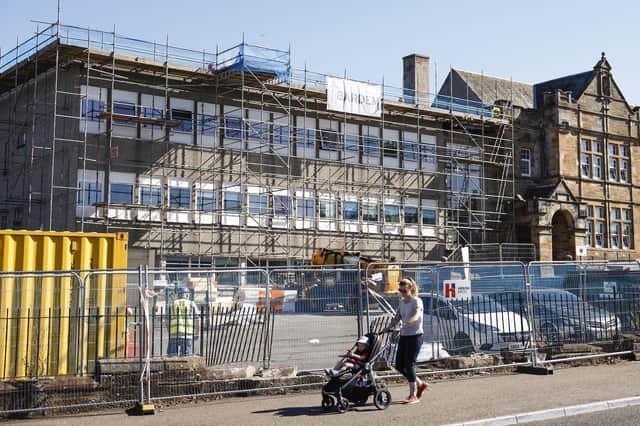Falkirk Council: Investigations to identify any use of RAAC in its buildings "ongoing"


The UK Government’s decision to close more than 100 schools last week amid safety concerns about reinforced autoclaved aerated concrete (RAAC) – the “bubbly” concrete material, which is prone to sudden collapse – has brought the building material back into the spotlight.
Rising concerns about the concrete construction material have led to questions over the safety of public buildings across the UK.
Advertisement
Hide AdAdvertisement
Hide AdThe Scottish Government confirmed on Tuesday that 37 schools in Scotland have been found to contain RAAC – none of these are in the Falkirk district. The council areas where these 37 schools are located are City of Edinburgh, Aberdeen, West Lothian, Dundee, Aberdeenshire, Highland, Moray, Inverclyde, Perth and Kinross, North Lanarkshire and Argyll and Bute.
However, Falkirk Council has said this week it is assessing its property portfolio. A spokesperson said: “Falkirk Council is aware of the challenges represented by the potential the presence of RACC in buildings and has been liaising with other local authorities and the Scottish Government on this matter. The council is currently progressing investigations and assessments across its estate to identify buildings where RACC may be present. At this stage it would be premature to advise anything further until this process is concluded.”
RAAC was introduced and widely used in the UK from the 1950s to the mid-1980s. It was generally used for wall panels or roof planks in the construction of government estate buildings including hospitals and schools.
Earlier this year, concerns had been raised when around 250 NHS buildings in Scotland were flagged in an NHS Scotland report as being thought to contain the material. This included eight buildings in Forth Valley. At that time, NHS Forth Valley said that the report had been an “initial desktop exercise” simply looking at the age of the property and construction type but did not actually indicate or confirm the presence of RAAC. The health board confirmed it had commissioned an external surveyor to carry out site inspections and investigations which did not identify any RAAC in any of the properties listed.
Advertisement
Hide AdAdvertisement
Hide AdFirst Minister Humza Yousaf said on Saturday that Scottish ministers had no plans to close affected schools “at this stage”.
The Government has also said that checks are ongoing in buildings thought to contain RAAC, but some of it “takes time to carry out”.
The Scottish Government has established a cross sector working group on RAAC to “ensure action is taken where required so that people are safe and feel safe in buildings”.